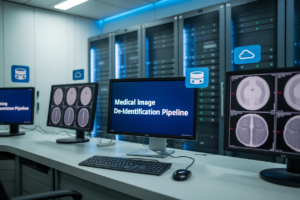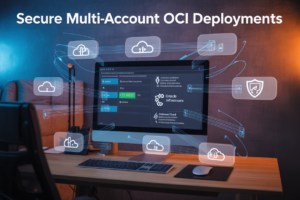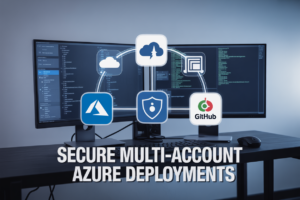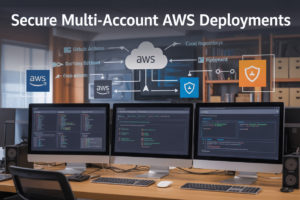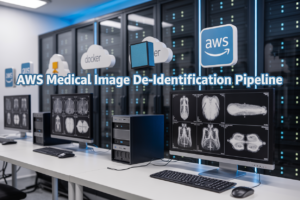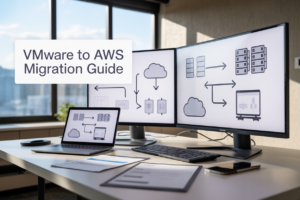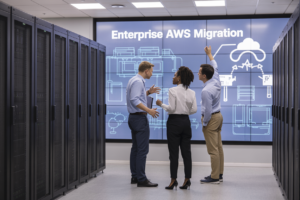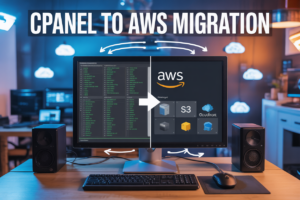Building production-ready GenAI applications isn’t just about picking the right AI model—it’s about creating a solid operational foundation that can handle real-world demands. LLMOps on AWS gives you the framework to deploy, monitor, and scale your generative AI projects reliably.
This guide walks you through AWS Bedrock deployment from start to finish. You’ll learn how to set up your environment, choose the right foundation models, and build applications that actually work in production. We’re talking about the practical stuff that makes the difference between a cool demo and a system your users can count on.
This step-by-step approach is perfect for ML engineers, DevOps professionals, and technical architects who need to get GenAI applications running on AWS without the guesswork. You already know the basics of machine learning—now you need the operational knowledge to make it work at scale.
We’ll cover the essential building blocks of LLMOps best practices, including how to architect your GenAI applications for reliability and performance. You’ll also discover proven strategies for continuous deployment GenAI workflows that keep your applications updated without breaking things. Finally, we’ll dive into monitoring and scaling techniques that help you maintain high-performing AI systems as your user base grows.
Ready to turn your GenAI ideas into production-ready applications? Let’s get started with AWS Bedrock and build something that actually works.
Understanding LLMOps and AWS Bedrock Fundamentals
Define LLMOps and its critical role in GenAI applications
LLMOps represents the specialized discipline of managing large language model lifecycles in production environments. Unlike traditional software deployment, LLMOps addresses unique challenges like model versioning, prompt engineering, token management, and response quality monitoring. This practice becomes essential when deploying GenAI applications that require consistent performance, scalability, and governance across enterprise environments.
Explore AWS Bedrock’s managed foundation model capabilities
AWS Bedrock provides serverless access to leading foundation models including Claude, Llama, and Titan through simple API calls. The platform eliminates infrastructure management while offering model customization through fine-tuning and knowledge bases. Bedrock’s built-in security features include data encryption, VPC support, and compliance certifications, making it ideal for enterprise GenAI deployments requiring robust governance and control.
Compare traditional MLOps with LLMOps workflows
| Traditional MLOps | LLMOps |
|---|---|
| Model training focus | Prompt optimization and fine-tuning |
| Structured data pipelines | Unstructured text processing |
| Batch inference patterns | Real-time conversational flows |
| Performance metrics (accuracy, F1) | Quality metrics (relevance, coherence) |
| Feature engineering | Prompt engineering and RAG |
| Model drift monitoring | Response quality degradation |
LLMOps workflows emphasize prompt versioning, response evaluation, and conversation state management rather than traditional model training cycles. This shift requires new tooling for prompt templates, retrieval systems, and human feedback loops.
Identify key benefits of using Bedrock for GenAI deployment
Bedrock accelerates GenAI development by providing immediate access to state-of-the-art models without training overhead. The platform’s pay-per-use pricing eliminates upfront infrastructure costs while automatic scaling handles traffic fluctuations seamlessly. Integration with AWS services like Lambda, SageMaker, and CloudWatch creates comprehensive LLMOps pipelines. Security features include data residency controls and model access governance, ensuring compliance with enterprise requirements while maintaining deployment velocity.
Setting Up Your AWS Environment for LLMOps
Configure essential AWS services and permissions
Getting your AWS environment ready for LLMOps on AWS requires activating several key services beyond just Bedrock. Start by enabling Amazon CloudWatch for monitoring your GenAI applications, AWS Lambda for serverless processing, and Amazon S3 for storing model artifacts and logs. You’ll also need Amazon ECR if you plan to containerize your applications. Navigate to each service console and ensure they’re available in your preferred region. Most importantly, request access to AWS Bedrock foundation models through the model access page, as this can take time to approve. Set up CloudTrail for audit logging and Amazon EventBridge for event-driven architectures that support continuous deployment GenAI workflows.
Install and configure AWS CLI and SDKs
Download and install the latest AWS CLI version 2 from the official AWS website, then configure it using aws configure with your access keys. For Python developers working on GenAI applications, install boto3 SDK using pip install boto3 boto3-stubs. If you’re using Node.js, install the AWS SDK with npm install @aws-sdk/client-bedrock. Test your setup by running aws bedrock list-foundation-models to verify Bedrock access. Create a dedicated virtual environment for your LLMOps projects to avoid dependency conflicts. Consider installing additional tools like AWS SAM CLI for serverless deployment and AWS CDK for infrastructure as code approaches to deploying generative AI on AWS.
Set up IAM roles for secure Bedrock access
Create specific IAM roles following the principle of least privilege for your LLMOps workflows. Start with a basic role that includes bedrock:InvokeModel permissions for your chosen foundation models, plus logs:CreateLogGroup and logs:PutLogEvents for CloudWatch integration. For production environments, create separate roles for development, staging, and production with different permission levels. Add policies for S3 access if your GenAI architecture requires file storage, and include Lambda execution permissions if using serverless functions. Use IAM policy conditions to restrict access by IP address or time if needed. Always attach roles to EC2 instances or Lambda functions rather than embedding credentials directly in your code for better security.
Choosing and Accessing Foundation Models in Bedrock
Evaluate available foundation models for your use case
Amazon Bedrock offers an impressive lineup of foundation models from leading AI companies including Anthropic’s Claude, Amazon’s Titan, AI21’s Jurassic, Cohere’s Command, Meta’s Llama, and Stability AI’s models. Each model brings unique strengths to the table. Claude excels at reasoning and analysis, making it perfect for complex business logic and document processing. Titan models shine in text generation and embeddings for search applications. Jurassic handles multilingual tasks beautifully, while Command specializes in enterprise-grade text generation. Llama offers strong open-source capabilities, and Stability AI dominates image generation workflows.
When selecting your model, consider factors like response quality, latency requirements, cost constraints, and specific capabilities needed for your GenAI application. Text-heavy applications might benefit from Claude or Command, while multimodal needs point toward models supporting both text and images.
Request model access and understand pricing structures
AWS Bedrock foundation models operate on a request-based access system. Navigate to the Bedrock console and submit access requests for your chosen models – some are instantly available while others require approval. The pricing structure varies significantly across models, with costs calculated per input/output tokens or API calls.
Anthropic’s Claude models typically cost $0.008-$0.024 per 1K tokens depending on the version, while Amazon Titan pricing starts around $0.0008 per 1K tokens. Image generation models like Stability AI charge per image generated, usually $0.018-$0.036 per image. Plan your budget carefully by estimating monthly token usage and comparing model costs against performance requirements for your LLMOps workflow.
Test model capabilities through the Bedrock console
The Bedrock console provides a robust playground environment for testing AWS Bedrock foundation models before integrating them into your GenAI applications. Access the text playground to experiment with prompts, adjust parameters, and compare outputs across different models side-by-side. This hands-on testing phase proves essential for LLMOps success.
Run your specific use case scenarios through multiple models, testing everything from simple queries to complex reasoning tasks. Pay attention to response quality, consistency, and how well each model handles your domain-specific terminology. Document performance metrics like response time and accuracy to inform your final model selection for production deployment.
Configure model parameters for optimal performance
Fine-tuning model parameters dramatically impacts your GenAI application’s performance and costs. Temperature controls creativity versus consistency – lower values (0.1-0.3) produce focused, predictable responses while higher values (0.7-1.0) generate more creative output. Top-p sampling affects diversity by controlling the probability mass considered for token selection.
Max tokens limits response length, directly impacting costs and latency. Start with conservative settings like temperature 0.3, top-p 0.9, and appropriate token limits based on your application needs. Monitor performance metrics and gradually adjust parameters based on real-world usage patterns. Stop sequences help control output format, while presence and frequency penalties prevent repetitive content in your LLMOps pipeline.
Building Your GenAI Application Architecture
Design scalable application infrastructure on AWS
Building a robust AWS Bedrock deployment requires careful infrastructure design that can handle variable workloads and scale seamlessly. Start with Amazon API Gateway as your entry point, providing rate limiting, authentication, and request routing capabilities. Deploy your application logic using AWS Lambda for serverless execution or Amazon ECS for containerized workloads, depending on your processing requirements. Set up Application Load Balancer to distribute traffic across multiple availability zones, ensuring high availability for your GenAI applications.
Configure Auto Scaling groups to automatically adjust capacity based on demand metrics like request volume or latency. Use Amazon CloudFormation or AWS CDK to define your infrastructure as code, enabling consistent deployments across environments. Store application data in Amazon DynamoDB for fast NoSQL operations or Amazon RDS for relational data needs. Implement Amazon ElastiCache for caching frequently requested model responses, reducing Bedrock API calls and improving response times.
Integrate Bedrock APIs with your application code
AWS Bedrock integration requires proper SDK configuration and authentication handling through IAM roles. Initialize the Bedrock client with appropriate region settings and credential providers, ensuring your application can seamlessly communicate with foundation models. Implement asynchronous request patterns using AWS SDK’s built-in retry and backoff mechanisms to handle API rate limits effectively.
Structure your API calls with proper request formatting, including model identifiers, inference parameters, and content filtering settings. Create wrapper functions that abstract Bedrock complexity from your business logic, making your code more maintainable and testable. Use connection pooling and request batching where possible to optimize performance and reduce latency in your LLMOps workflows.
import boto3
import json
from botocore.exceptions import ClientError
class BedrockClient:
def __init__(self, region='us-east-1'):
self.client = boto3.client('bedrock-runtime', region_name=region)
async def invoke_model(self, model_id, prompt, max_tokens=1000):
body = json.dumps({
"prompt": prompt,
"max_tokens": max_tokens,
"temperature": 0.7
})
response = self.client.invoke_model(
modelId=model_id,
contentType='application/json',
body=body
)
return json.loads(response['body'].read())
Implement proper error handling and retry mechanisms
Robust error handling ensures your GenAI application maintains reliability under various failure scenarios. Implement exponential backoff strategies for handling throttling errors from AWS Bedrock, with configurable retry limits and jitter to avoid thundering herd problems. Create custom exception classes for different error types, including model unavailability, content filtering violations, and quota exceeded scenarios.
Set up comprehensive logging using AWS CloudWatch to capture error patterns and performance metrics. Implement circuit breaker patterns that temporarily disable failing endpoints while allowing your application to gracefully degrade functionality. Design fallback mechanisms that can switch between different foundation models or serve cached responses when primary services are unavailable.
| Error Type | Retry Strategy | Fallback Action |
|---|---|---|
| Throttling | Exponential backoff | Queue request |
| Model unavailable | Switch model | Serve cached response |
| Content filter | No retry | Return error message |
| Timeout | Linear backoff | Reduce request complexity |
Set up data preprocessing and postprocessing pipelines
Effective data preprocessing ensures optimal model performance and consistent outputs from your AWS Bedrock deployment. Create input validation pipelines that sanitize user content, check for malicious inputs, and format data according to model requirements. Implement text tokenization and encoding processes that respect model-specific limits and formatting needs.
Design postprocessing workflows that filter model outputs, apply business rules, and format responses for your application’s needs. Use AWS Step Functions to orchestrate complex data transformation pipelines that can handle batch processing and real-time streaming scenarios. Set up Amazon S3 for storing processed data and intermediate results, with lifecycle policies for cost optimization in your LLMOps workflow.
Configure data quality monitoring using Amazon CloudWatch metrics to track preprocessing success rates, processing times, and output quality scores. Implement automated data validation checks that can flag anomalous inputs or outputs for manual review, ensuring your GenAI application maintains high standards.
Configure security best practices for API calls
Security configuration for AWS Bedrock requires implementing multiple layers of protection for your GenAI applications. Set up IAM roles with least privilege access, granting only necessary permissions for specific Bedrock models and actions. Use AWS Secrets Manager to store API keys and sensitive configuration data, rotating credentials regularly to maintain security posture.
Enable AWS CloudTrail logging for all Bedrock API calls, creating audit trails that track model usage and access patterns. Implement API Gateway throttling policies that prevent abuse and protect against denial-of-service attacks. Configure VPC endpoints for private communication between your application and Bedrock services, avoiding internet routing for sensitive data.
Apply content filtering policies that automatically screen inputs and outputs for inappropriate content, compliance violations, or sensitive information. Use AWS Key Management Service (KMS) for encrypting data in transit and at rest, ensuring your LLMOps deployment meets regulatory requirements and industry standards for data protection.
Implementing Continuous Integration and Deployment
Create automated testing frameworks for GenAI applications
Building robust testing frameworks for GenAI applications on AWS Bedrock requires specialized approaches that go beyond traditional software testing. Start by implementing response quality validation using automated evaluation metrics like ROUGE, BLEU, or custom scoring functions that assess generated content against expected outputs. Create test suites that validate model responses across different input scenarios, edge cases, and prompt variations to ensure consistent performance.
Set up integration tests that validate your entire GenAI pipeline, from input processing through Bedrock API calls to response formatting. Use AWS Lambda functions to create lightweight testing services that can simulate user interactions and validate end-to-end workflows. Implement load testing frameworks using tools like Artillery or AWS Load Testing Solution to evaluate how your application performs under various traffic patterns and concurrent user scenarios.
Design contract testing for your Bedrock integrations to catch breaking changes in model behavior or API responses. Create golden datasets with known good inputs and expected outputs, then run regression tests whenever you update model configurations or switch between foundation models. Use AWS Step Functions to orchestrate complex testing workflows that can run automatically on code commits or schedule-based triggers.
Set up CI/CD pipelines using AWS CodePipeline
AWS CodePipeline provides the backbone for implementing continuous deployment GenAI workflows that streamline your LLMOps on AWS processes. Create multi-stage pipelines that automatically trigger when code changes are pushed to your repository, starting with source control integration through AWS CodeCommit, GitHub, or Bitbucket. Configure CodeBuild projects to run your automated test suites, including unit tests, integration tests, and GenAI-specific validation checks.
Structure your pipeline stages to include development, staging, and production environments, each with appropriate Bedrock model access and configuration. Use AWS CodeDeploy or AWS SAM for serverless deployments to push your GenAI applications to different environments with proper rollback capabilities. Implement approval gates between staging and production deployments to add human oversight for critical model updates.
Configure environment-specific parameter stores using AWS Systems Manager to manage different Bedrock model configurations, API keys, and application settings across your pipeline stages. Set up CloudWatch integration to monitor pipeline execution and automatically trigger notifications when builds fail or deployments encounter issues. Use AWS IAM roles with least-privilege access to secure your pipeline operations while maintaining proper permissions for Bedrock API access.
Implement model versioning and rollback strategies
Model versioning becomes critical when working with AWS Bedrock foundation models and custom configurations in production environments. Create a systematic approach to track model versions, prompt templates, and configuration parameters using AWS Systems Manager Parameter Store or AWS Secrets Manager. Tag your deployments with semantic versioning that includes model identifiers, configuration hashes, and deployment timestamps.
Implement blue-green deployment strategies using AWS Lambda aliases and weighted routing to gradually shift traffic between model versions. This approach allows you to test new configurations with a small percentage of users before full rollout. Set up automated rollback triggers based on performance metrics, error rates, or response quality degradation using CloudWatch alarms and AWS Lambda functions.
Create comprehensive rollback procedures that can quickly revert to previous stable configurations when issues arise. Document your model artifacts, including prompt engineering changes, fine-tuning parameters, and integration configurations in version control systems. Use AWS CloudFormation or CDK to maintain infrastructure as code, making it easier to recreate specific deployment states and roll back both application code and infrastructure changes when needed.
Establish monitoring benchmarks for each model version deployment, tracking key performance indicators like response latency, accuracy scores, and user satisfaction metrics. Build automated comparison tools that can evaluate new model versions against baseline performance before promoting them to production environments.
Monitoring and Optimizing Your Deployed GenAI Application
Set up comprehensive logging with CloudWatch
CloudWatch becomes your command center for tracking LLMOps on AWS deployments. Configure custom metrics to capture Bedrock API calls, token usage, and model inference latency. Create detailed log groups for application events, error patterns, and user interactions. Set up structured logging with JSON format to enable powerful filtering and analysis across your GenAI applications.
Monitor model performance and response times
Track key performance indicators including response latency, throughput, and accuracy metrics for your AWS Bedrock foundation models. Implement custom dashboards showing real-time performance data, token consumption rates, and user satisfaction scores. Monitor prompt engineering effectiveness by logging input variations and their corresponding output quality. Set baseline performance thresholds to identify degradation early in your LLMOps workflow.
Implement cost optimization strategies
Optimize AWS Bedrock deployment costs through intelligent model selection and usage patterns. Configure automated scaling policies that adjust based on demand, preventing unnecessary charges during low-traffic periods. Implement request batching for similar queries and cache frequently requested responses to reduce API calls. Use AWS Cost Explorer to analyze spending patterns and identify opportunities for reserved capacity pricing on consistent workloads.
Configure alerting for system anomalies
Establish proactive alerting systems that notify teams when your GenAI applications experience issues. Create CloudWatch alarms for high error rates, unusual response times, or unexpected cost spikes. Configure SNS notifications for critical system failures and integrate with communication tools like Slack. Set up automated remediation workflows that can restart failed services or scale resources when performance thresholds are breached in your LLMOps pipeline.
Scaling and Managing Production LLMOps Workflows
Implement auto-scaling for high-demand scenarios
Configure AWS Application Auto Scaling for your Bedrock endpoints to handle traffic spikes automatically. Set CloudWatch metrics like invocation count and response latency as scaling triggers. Use target tracking policies to maintain optimal performance during peak usage periods. Lambda functions can dynamically adjust provisioned concurrency based on real-time demand patterns, ensuring your GenAI applications remain responsive while controlling costs.
Manage multi-environment deployments effectively
Create separate AWS environments for development, staging, and production using AWS Organizations and separate accounts. Deploy your LLMOps workflows across environments using AWS CodePipeline with environment-specific parameter stores. Use AWS Systems Manager Parameter Store to manage configuration differences between environments. Implement blue-green deployments through AWS CodeDeploy to minimize downtime during production releases while maintaining consistent model performance across all stages.
Handle model updates and maintenance cycles
Establish automated model versioning using Amazon S3 with lifecycle policies for model artifacts. Create maintenance windows using AWS Systems Manager Maintenance Windows to perform model updates without disrupting production traffic. Implement A/B testing frameworks through AWS CloudFront and Application Load Balancer to gradually roll out new foundation models. Monitor model drift using Amazon CloudWatch custom metrics and automatically trigger retraining pipelines when performance thresholds are exceeded, ensuring continuous model accuracy.
Building and deploying GenAI applications on AWS Bedrock doesn’t have to feel overwhelming when you break it down into manageable steps. From setting up your AWS environment and choosing the right foundation models to creating a solid CI/CD pipeline, each piece plays a crucial role in your LLMOps success. The monitoring and optimization strategies we covered will help you maintain peak performance while scaling your applications to meet growing demands.
Ready to take your GenAI projects to the next level? Start by experimenting with AWS Bedrock’s foundation models in a sandbox environment, then gradually build out your production workflow using the architecture patterns and best practices outlined here. Remember, the key to successful LLMOps lies in treating your AI applications like any other software project – with proper testing, monitoring, and continuous improvement. Your users will thank you for the reliable, high-performing GenAI experiences you’ll be able to deliver.











